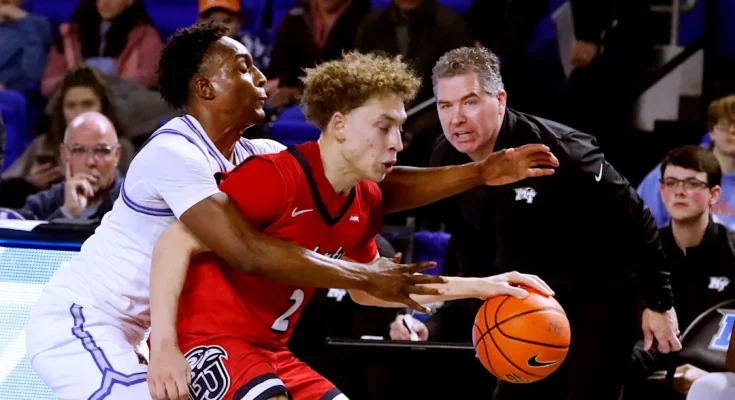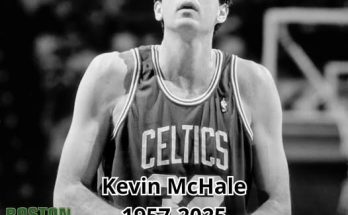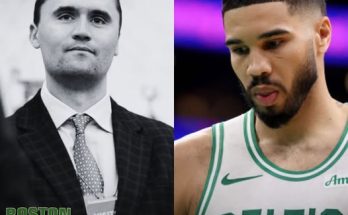The Indiana Pacers are entering a pivotal period in their franchise arc, with young talent blossoming, veterans stabilizing the roster, and a front office unafraid to take risks. In such a context, any acquisition, no matter how under-the-radar it may appear on the national stage, has the potential to shape the franchise’s long-term success. That’s where Taelon Peter enters the conversation. A player who didn’t dominate headlines during his collegiate career but offers a multi-layered skillset and a chip on his shoulder big enough to shift locker room energy. For the Pacers, the question isn’t just whether Taelon Peter can make the roster; it’s what exactly they can unlock in him if they lean into development and vision instead of simply results.
Taelon Peter arrives with the kind of résumé that doesn’t jump off the screen until you dig deeper. Coming out of Arkansas Tech, a Division II school, Peter might not have played against elite competition every night, but he did dominate his level. He averaged 17.9 points per game in his final season, showing a capacity to score in multiple ways—slashing, pull-up midrange, and spot-up threes. Standing at 6’4″ and weighing around 195 pounds, he’s built like a prototypical NBA combo guard, but what sets him apart isn’t his body—it’s his mentality. Peter’s story is one that leans heavily on perseverance. Overlooked, underrated, and underestimated, he clawed his way into Summer League opportunities not with flash but with fundamentals, not with buzz but with backbone. The Pacers didn’t stumble upon Peter by accident—they’ve been paying attention, and for good reason.
The Pacers have one of the more intriguing guard rotations in the NBA. Tyrese Haliburton is the franchise cornerstone. Andrew Nembhard is a defensive bulldog and secondary ball-handler. Bennedict Mathurin is a fearless scorer with untapped potential. And T.J. McConnell offers veteran savvy and stability. On paper, there’s not a glaring need for another guard. But the NBA isn’t played on paper. It’s played over 82 grueling nights, with injuries, slumps, and matchups dictating rotations. And it’s in that ecosystem that Peter can carve out a role. He’s not being brought in to be a star—he’s being brought in to be a glue guy, a stopgap, a situational weapon who, with the right grooming, could turn into a long-term contributor. The Pacers know the value of building from the margins, and Peter represents a gamble with potentially high ROI.
One of the things that stands out about Peter is his defensive tenacity. He’s a grinder. During pre-draft workouts and Summer League play, scouts praised his ability to stay attached to ball-handlers, fight over screens, and contest shots without fouling. In an era where spacing and pace dominate, having a guard who can defend across multiple positions without becoming a liability is critical. The Pacers have struggled at times to contain dribble penetration, especially when McConnell isn’t on the floor. Peter offers the possibility of being a defensive asset off the bench—someone who can be thrown into games to slow down scoring guards or provide a spark when the team’s energy dips. He’s the type of player who wins coaches’ trust not through highlight plays, but through consistency in effort.
Offensively, Peter’s game isn’t flashy, but it is versatile. At Arkansas Tech, he developed a reputation for being a smart cutter, a solid decision-maker, and a respectable shooter from deep. His shooting percentages may not scream elite marksman, but the mechanics are there. He gets his shot off quickly and has decent elevation, making it difficult to contest. He’s also capable of attacking closeouts and making the extra pass—an underrated skill in modern offenses. On a team like the Pacers, which thrives in transition and plays unselfishly, Peter fits philosophically. He doesn’t need the ball to be effective. He can space the floor, move without it, and contribute in ways that aren’t always reflected in the box score.
Where Peter can really shine, though, is in his understanding of tempo. Watching him play, you notice that he rarely rushes. He’s methodical, even when the game speeds up. That’s a trait the Pacers can exploit. Young players often struggle with pacing at the next level, either trying to do too much too quickly or disappearing completely. Peter doesn’t seem to have that problem. He’s patient. He reads defenses well. And that court IQ could be a reason Indiana keeps him around even if he doesn’t crack the rotation right away. With the right tutelage—perhaps under the mentorship of McConnell—Peter can learn how to manipulate angles, exploit matchups, and run the second unit effectively in spot minutes.
Another area where Peter could contribute is in situational lineups. Rick Carlisle is known for experimenting with rotations, especially when he senses matchups that can be exploited. If Peter can prove himself in practice and in brief in-game stints, he could earn minutes as a defensive specialist or as part of three-guard lineups designed to spread the floor and increase tempo. Given how injury-prone guards can be over a full season, having someone like Peter ready to step in could prevent the team from losing momentum during critical stretches. Depth isn’t just about having talent—it’s about having players who can play without derailing the system. That’s the type of player Peter aspires to be.
From a cultural standpoint, adding someone like Peter sends a message. It tells the locker room that no job is secure unless you earn it. It reminds everyone that work ethic matters. And it injects hunger into a roster that needs to balance comfort with competition. Players like Peter, who fight for every minute, have a way of making others around them better. They push in practice. They hold teammates accountable. And most of all, they stay ready. In a league that sees careers swing on moments—a loose ball, a defensive stop, a made three—having someone like Peter waiting in the wings can be the difference between mediocrity and momentum.
Financially, Peter is a low-risk investment. He’s likely on a non-guaranteed or two-way deal, meaning he won’t count heavily against the cap and can be moved easily if needed. That flexibility is valuable for a team like Indiana, which is trying to maintain cap space while also building a competitive roster. But more than the financials, it’s the developmental value that matters. Indiana has had success developing under-the-radar players before. Nembhard was a second-round pick. Aaron Nesmith found his rhythm after being cast off by Boston. The Pacers have the infrastructure to help Peter thrive—strong coaching, a clear identity, and a willingness to play young guys if they earn it.
There’s also the G League pathway. If Peter doesn’t make the final 15-man roster, he could spend time with the Fort Wayne Mad Ants, where he’d be able to refine his game in a professional setting while staying connected to the Pacers’ system. This hybrid approach to development has proven effective for many franchises, and it could be the perfect proving ground for Peter to showcase whether his college dominance can translate to pro success. It’s a long road, but one that’s traveled by players every year who go from obscurity to reliability simply by putting in the work and seizing opportunities.
The biggest hurdle Peter faces is perception. Coming from a small school, he’ll have to work twice as hard to be taken seriously. But that’s not unfamiliar territory for him. His entire career has been about overcoming doubt. And if there’s one thing the NBA rewards more than talent, it’s resilience. Peter has the tools, the mindset, and the platform. Now, it’s about fit, timing, and execution. The Pacers are betting that in the margins of the draft board and the lower tiers of Summer League invites, there are players who can help them win. Not just one day, but soon.
Ultimately, what the Indiana Pacers can get out of Taelon Peter isn’t about stats or headlines. It’s about influence. If he becomes a rotational piece, that’s a win. If he becomes a practice spark, that’s a win. If he pushes someone ahead of him to get better, that’s a win. In modern basketball, roles are fluid. Players evolve. And teams thrive when they create environments where players like Peter can not only survive but thrive. Whether he plays 82 games or spends most of the season in the G League, his presence alone speaks to a franchise that’s thinking beyond the box score, beyond the hype, and beyond conventional scouting.
Taelon Peter may never be a household name. But if he becomes the kind of player who helps the Pacers close quarters, swing defensive momentum, and build internal competition, he’ll have already done more than most expected. And if his ceiling turns out to be higher than anyone imagined, Indiana will have done what the best organizations always do: they found a gem where others weren’t even looking.



